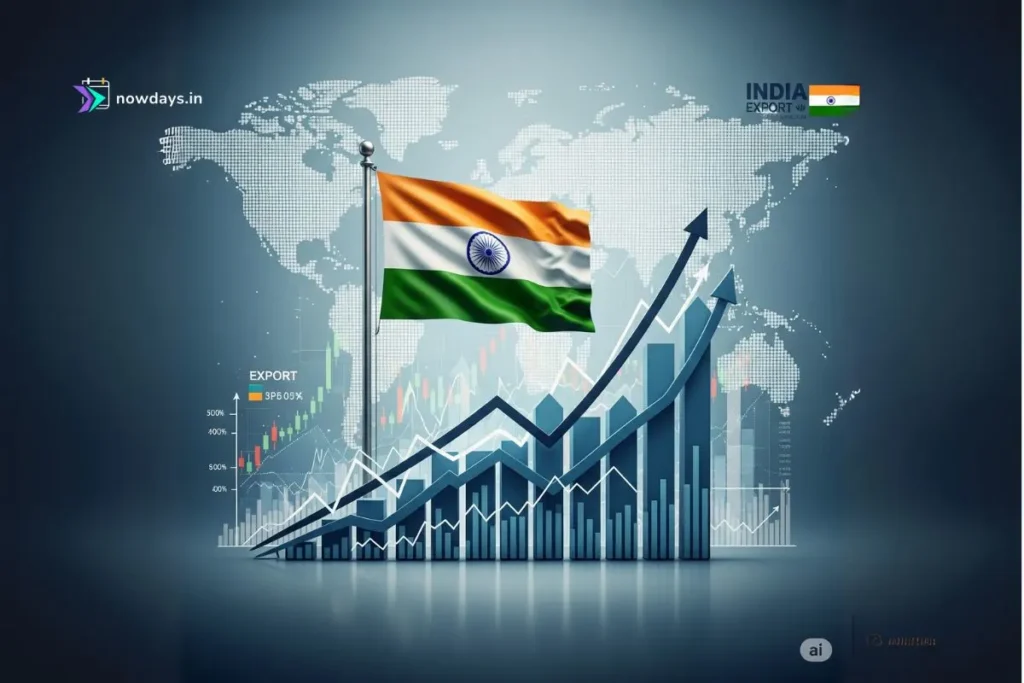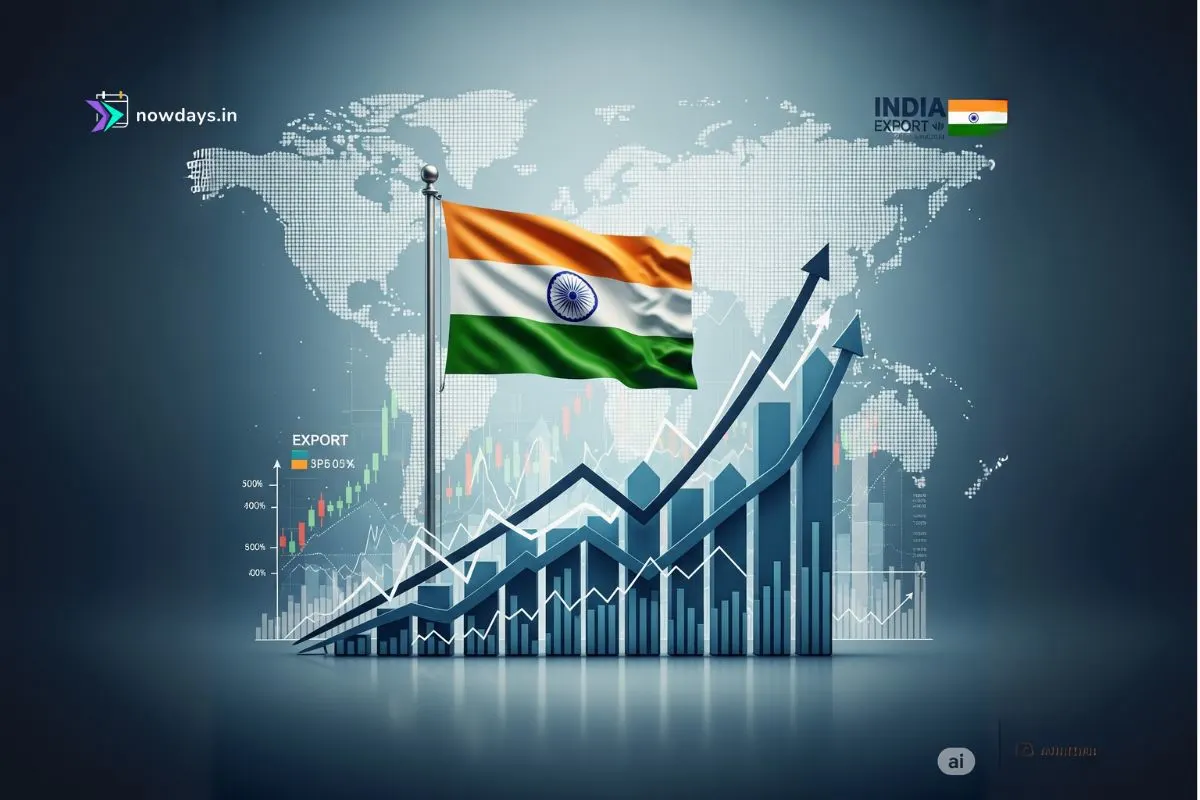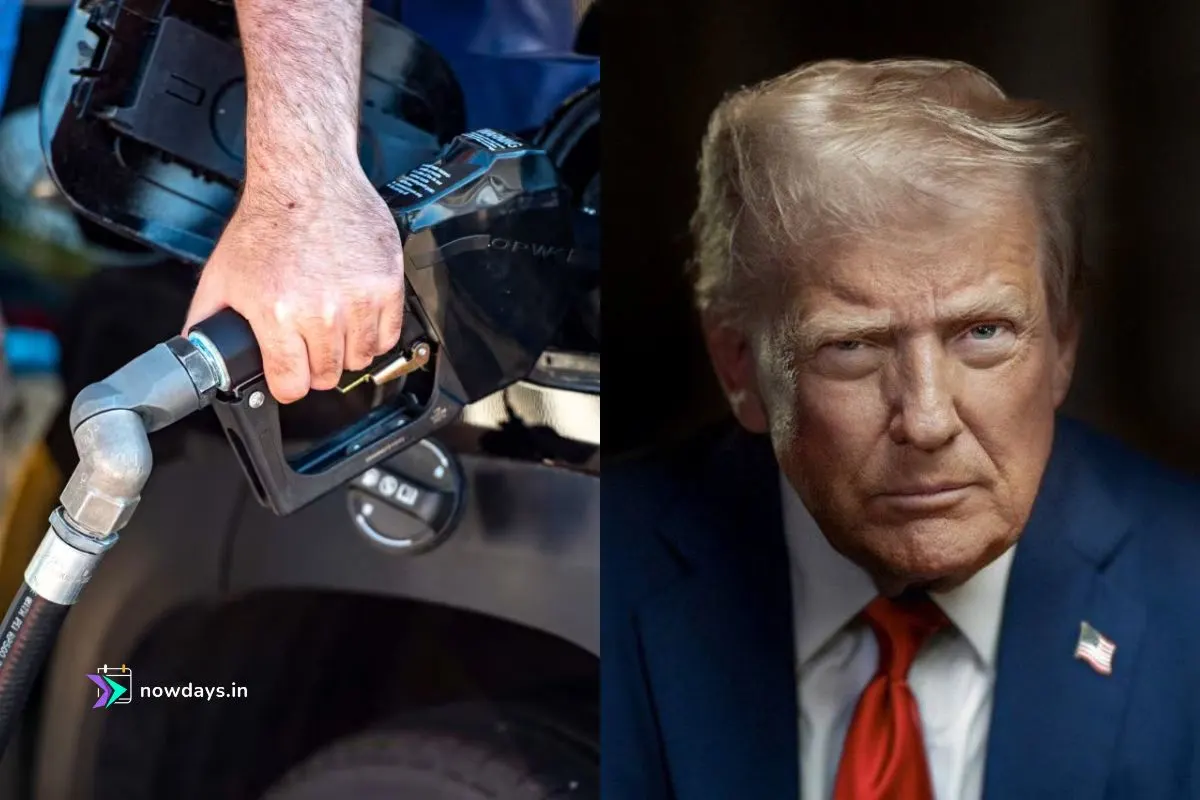New Delhi, July 15, 2025 – Defying global economic headwinds, India’s export sector delivered a powerhouse performance in June 2025, with total exports climbing 6.5% year-on-year to reach $67.98 billion. This robust growth, driven by surging services and resilient merchandise shipments, underscores India’s strategic positioning amid evolving trade dynamics and reinforces its status as a key pillar of global economic stability .

The Numbers Behind the Momentum
- Services Supremacy: Software, consulting, and financial services fueled the surge, with services exports hitting $32.39 billion in May 2025 (up significantly from $29.61 billion a year prior), setting the stage for June’s continued strength . Digitally Delivered Services (DDS) exports, already at $269 billion in 2024, solidify India’s position as the world’s fifth-largest digital exporter .
- Merchandise Resilience: While May saw a slight dip in goods exports ($38.73B), June’s overall growth indicates a rebound. Key drivers included electronics, garments, chemicals, and a remarkable 200% YoY jump in aircraft/spacecraft parts exports to markets like Saudi Arabia and UAE .
- Trade Deficit Narrows: A strategic decline in oil and gold imports helped contain the merchandise trade deficit to $21.9 billion in May, down from $26.4 billion in April. This narrowing deficit positively impacts India’s current account outlook, projected at a manageable 1.2-1.3% of GDP for FY2026 .
Read more: Tesla Model Y Launched in India: Dual Variants, 4.6s 0–96 km/h, 526 km EPA Range
Table 1: India’s Export Performance Snapshot (May-June 2025)
| Indicator | Value (May 2025) | YoY Change | June 2025 Trend |
|---|---|---|---|
| Total Exports (Goods+Services) | $71.12B | +2.77% | $67.98B (+6.5% YoY) |
| Services Exports | $32.39B | +9.4% | Continued Momentum |
| Merchandise Exports | $38.73B | -2.2% | Rebound Indicated |
| Trade Deficit | $6.62B (May) | -29.2% | Improved Stability |
The Engines Powering India’s Export Ascent
- Global Demand Meets Domestic Agility: The HSBC Flash India Composite PMI soared to a 14-month high of 61.0 in June, fueled by record new export orders – the highest since data collection began in 2014. Manufacturing output accelerated (PMI: 58.4), and hiring surged, especially in factories . FIEO President S. C. Ralhan emphasized exporters are “adapting well to a tough global environment,” navigating Middle East disruptions effectively .
- The US Tariff Advantage: A pivotal NITI Aayog “Trade Watch Quarterly” report reveals India’s unique edge. While facing a potential 10% US tariff, key competitors like China, Mexico, and Canada confront steeper 20-50% tariffs. This differential gives India an advantage in 80 of the top 100 product categories exported to the US (representing $17.66B in exports), particularly textiles (HS63), electrical machinery (HS85), and industrial machinery (HS84) .
- Policy Tailwinds & Strategic Shifts: The RBI’s 100 basis points rate cut since February 2025, enabled by easing inflation (down to a 6-year low of 2.82% in May), has supported business investment and liquidity . Combined with the Union Budget’s INR 1.2 million income tax exemption, injecting ~INR 630 billion in disposable income, domestic demand is strengthening, supporting production bases geared for export . The government’s laser focus on fast-tracking FTAs with the US and EU, resolving non-tariff barriers, and securing visa access for professionals is critical .
- Monsoon Boost & Rural Revival: Forecasts of above-average monsoon rainfall (106% of LPA) promise a bumper agricultural harvest, boosting rural incomes and demand for goods – many feeding into export supply chains (e.g., textiles, processed foods) . This complements strong urban demand driven by the thriving services sector.
Table 2: India’s US Export Advantage: The Tariff Differential
| Factor | India’s Position | Competitor Position (e.g., China, Mexico, Canada) |
|---|---|---|
| Baseline US Tariff (Ad Valorem) | 10% | 20-50% |
| Effective Trade-Weighted Avg. Rate (Current) | 12.2% | Significantly Higher |
| Potential Effective Rate Post-Differential | Up to 28.2% | N/A (Already High) |
| Key Advantageous Sectors (HS Codes) | Electrical Machinery (85), Machinery/Parts (84), Textiles (63) | Facing Higher Barriers |
| % of Top 100 US-Bound Products with Indian Tariff Advantage | 80% | – |
Navigating Challenges: Geopolitics and Global Uncertainty
Despite the positive trajectory, significant risks loom:
- Middle East Volatility: The Israel-Iran conflict threatens critical shipping chokepoints like the Straits of Hormuz. Blockades could spike oil prices and freight costs, directly impacting input costs for exporters and global shipping logistics .
- US Trade Policy Uncertainty: While offering relative advantages now, the broader climate of US protectionism under the Trump administration (“steep reciprocal tariffs”) disrupts global supply chains and risks triggering trade wars. The ongoing India-US interim trade deal negotiations before the August 1 deadline are crucial to lock in gains .
- Global Fragility: The UN describes the world economy in a “precarious moment,” marked by trade tensions and declining cross-border investment. India’s 6.5% GDP growth, while robust, occurs against this fragile backdrop .
Future Outlook: Sustaining the Momentum
India’s export ecosystem is poised for strategic expansion:
- Leveraging the US Window: NITI Aayog urges aggressively capitalizing on the tariff differential by finalizing the US FTA with time-bound goals, focusing on digital trade rules, services (IT, finance), and improved H-1B/L-1 visa access .
- Beyond Merchandise: Dominance in services exports, especially DDS, requires securing cross-border data flow agreements and market access in emerging sectors like AI and cybersecurity within FTAs .
- Domestic Enablers: Recommendations include expanding PLI schemes to labour-intensive sectors, enhancing MSME export credit access, and building digital-ready customs infrastructure .
- Cautious Optimism: Deloitte forecasts 6.3-6.5% growth for FY 2025-26, balancing domestic stimulus (adding 0.6-0.7% to GDP) against potential US tariff impacts (shaving off 0.1-0.3%). Continued FDI strength ($81B in FY24-25, +14% YoY) provides a solid foundation .
Read more: India’s First Offshore Airport to Be Built Near Vadhavan Port, Says Maharashtra CM
Table 3: India’s Export Growth Trajectory & Projections
| Metric | FY 2024-25 (Actual) | FY 2025-26 (Projected) | Key Drivers/Constraints |
|---|---|---|---|
| Total Exports | $824.9B (Record High) | $870-890B | Services momentum, FTA gains, global demand |
| GDP Growth | 6.5% | 6.3% – 6.7% | Domestic consumption, capex, monsoon |
| Manufacturing PMI | Avg. ~57-58 | Sustained Expansion | PLI schemes, export orders, hiring surge |
| Major Risk Factor | Geopolitical tensions | US Trade Policy Finality | Strait of Hormuz stability, US tariff negotiations |
| Policy Support | RBI rate cuts (-100bps) | Neutral stance, Capex focus | Fiscal consolidation (Deficit: 4.4% of GDP) |
Anchoring Global Growth Amidst Uncertainty
India’s $67.98 billion export triumph in June 2025 is no accident. It’s the result of strategic diversification into high-growth services, shrewd navigation of shifting global tariff landscapes, and prudent domestic economic management fostering a competitive production base. While challenges from volatile geopolitics and protectionist policies persist, India’s agile exporters, supported by targeted government initiatives and robust fundamentals, are transforming uncertainty into opportunity.
As RBI Governor Sanjay Malhotra affirmed, “In this global milieu, the Indian economy remains a key driver of global growth” . With record FDI, manageable deficits, and a booming digital delivery ecosystem, India isn’t just weathering global storms—it’s charting a course to become the indispensable engine of 21st-century trade. The focus now must shift to securing lasting trade pacts and future-proofing supply chains to cement this hard-won advantage.










2 thoughts on “India’s Exports Up 6.5% YoY in June 2025, Reaching USD 67.98 Billion”